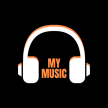The Evolution and Impact of Electronic Dance Music
Electronic Dance Music, commonly known as EDM, has taken the world by storm over the past few decades.

Electronic Dance Music, commonly known as EDM, has taken the world by storm over the past few decades. Originating in the underground club scenes, it has evolved into a global phenomenon, influencing various music genres and cultures. From pulsating beats to euphoric drops, EDM's energy is infectious, drawing millions to festivals, clubs, and streaming platforms. In this article, we will explore the evolution, impact, and future of Electronic Dance Music.
The Origins of Electronic Dance Music
EDM's roots can be traced back to the disco era of the 1970s, where electronic instruments like synthesizers and drum machines began to shape the sound of dance music. Pioneers such as Giorgio Moroder and Kraftwerk experimented with these new technologies, laying the foundation for future genres.
In the 1980s, the advent of house music in Chicago and techno in Detroit further pushed the boundaries of electronic music. DJs like Frankie Knuckles and Juan Atkins began to incorporate more complex electronic elements into their sets, creating a new wave of dance music that emphasized rhythm and groove.
The Rise of EDM in the 1990s and 2000s
The 1990s and early 2000s saw EDM gain mainstream popularity. Genres like trance, drum and bass, and dubstep emerged, each bringing unique sounds and styles to the forefront. The rave culture of the 1990s, characterized by massive, all-night dance parties, played a crucial role in popularizing EDM. Iconic festivals such as the Love Parade in Germany and the Electric Daisy Carnival in the United States became meccas for EDM enthusiasts.
During this period, artists like The Prodigy, Daft Punk, and Fatboy Slim achieved global recognition, blending electronic beats with mainstream appeal. These artists paved the way for EDM to break into the charts and radio airwaves, solidifying its place in the music industry.
The EDM Explosion: 2010s to Present
The 2010s marked an explosion of EDM's popularity worldwide. The genre's rise can be attributed to the proliferation of digital music platforms, social media, and global festivals. DJs and producers like Calvin Harris, Avicii, and Skrillex became household names, headlining major music festivals and selling out arenas.
The influence of EDM extended beyond just the music; it impacted fashion, lifestyle, and even pop culture. Collaborations between EDM artists and pop stars became common, further blurring the lines between genres. Tracks like "Wake Me Up" by Avicii and "Lean On" by Major Lazer and DJ Snake exemplified this crossover appeal.
The Impact of EDM on Music and Culture
EDM's impact on music and culture is undeniable. It has introduced new production techniques, such as the use of software synthesizers and digital audio workstations, which have become standard in modern music production. The genre's emphasis on live performances and DJing has also influenced how music is consumed and experienced.
Festivals like Tomorrowland, Ultra Music Festival, and Coachella have become cultural landmarks, attracting millions of attendees from around the world. These events not only showcase the biggest names in EDM but also promote a sense of community and shared experience among fans.
Moreover, EDM has been a catalyst for technological innovation in music. The development of advanced lighting, visual effects, and sound systems has enhanced the live music experience, making EDM concerts and festivals immersive spectacles.
The Future of EDM
The future of EDM looks promising, with the genre continuing to evolve and adapt to new trends. The integration of virtual reality and augmented reality technologies promises to revolutionize live performances, offering fans unprecedented levels of immersion.
Emerging subgenres and fusion styles, such as future bass, melodic dubstep, and tech-house, indicate that EDM is far from stagnant. Young producers and DJs are continually pushing the boundaries, experimenting with new sounds and incorporating diverse influences.
Additionally, the rise of streaming platforms and social media has democratized music production and distribution, allowing independent artists to reach global audiences. This trend is likely to foster even more innovation and creativity within the EDM community.
Conclusion
Electronic Dance Music has come a long way from its underground beginnings to becoming a dominant force in the music industry. Its evolution, marked by innovation and cultural impact, has shaped the soundscape of modern music. As EDM continues to grow and adapt, its influence will undoubtedly persist, inspiring new generations of artists and fans alike.
For more insights into the world of Electronic Dance Music, check out our detailed article on Electronic Dance Music.
https://blog.delivermytune.com/electronic-dance-music/
About the Creator
Enjoyed the story? Support the Creator.
Subscribe for free to receive all their stories in your feed. You could also pledge your support or give them a one-off tip, letting them know you appreciate their work.






Comments
There are no comments for this story
Be the first to respond and start the conversation.